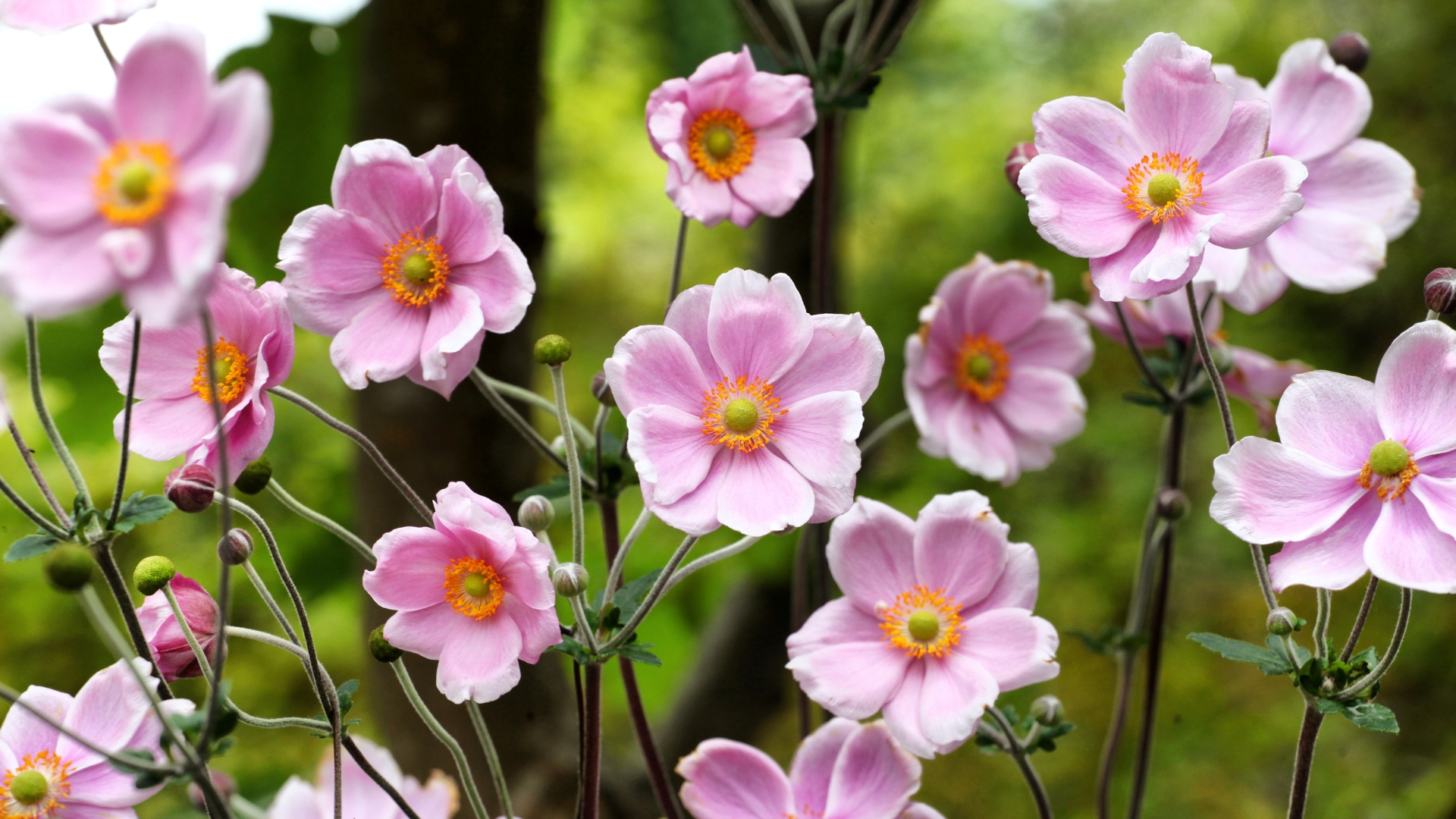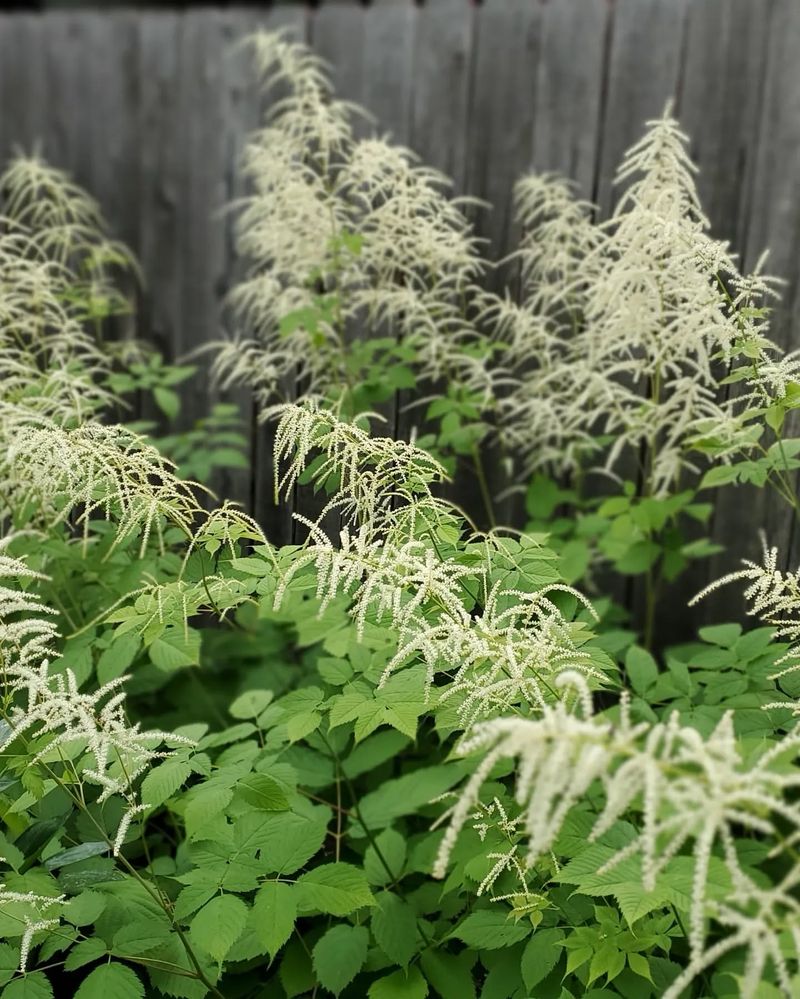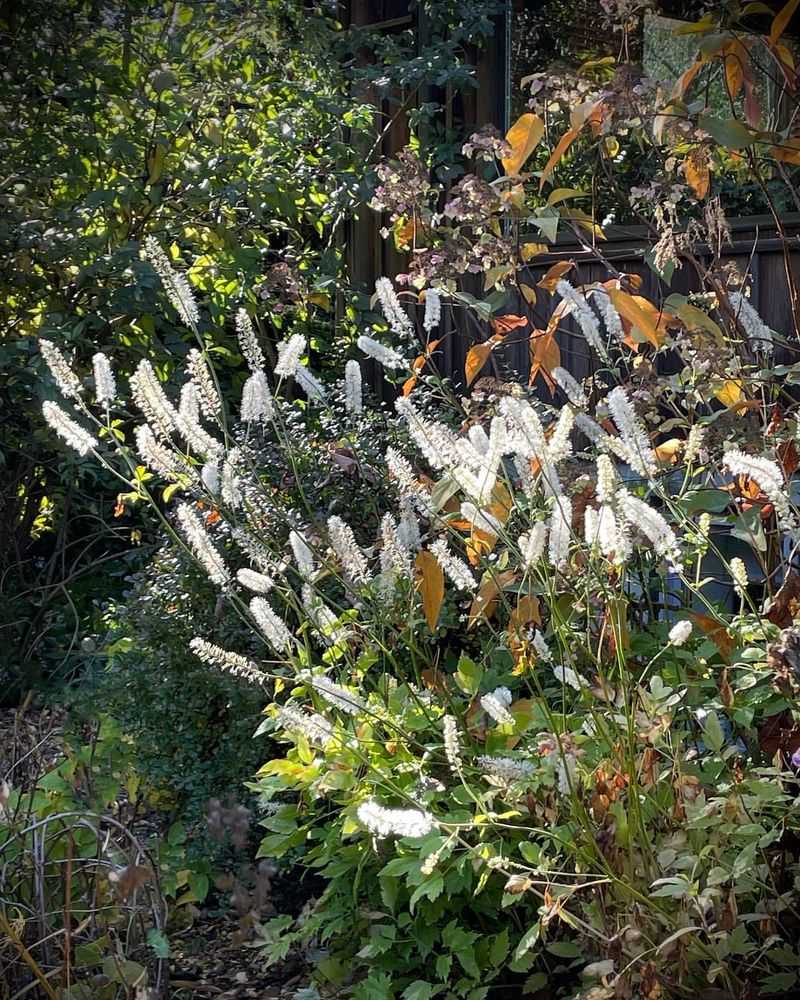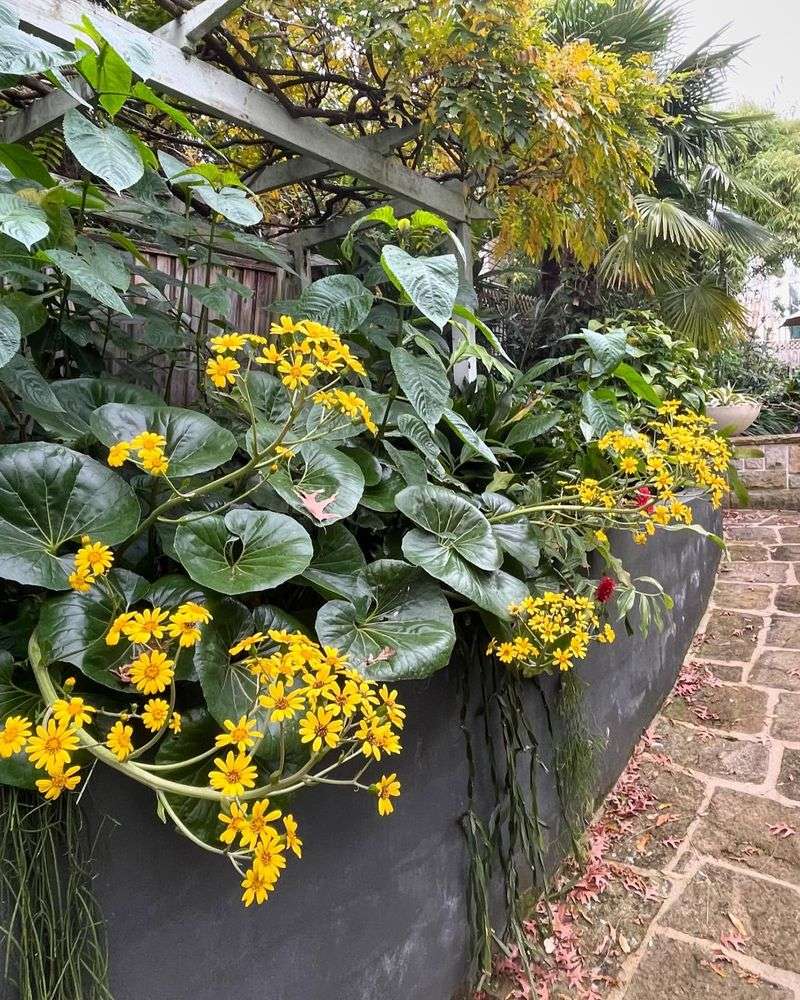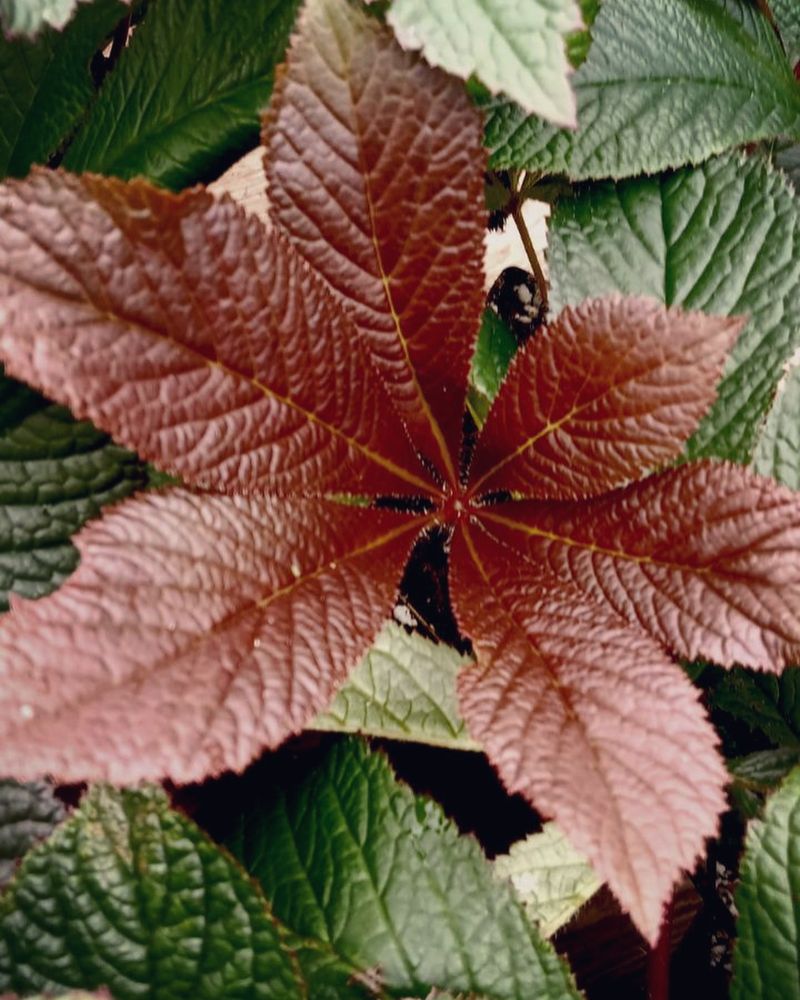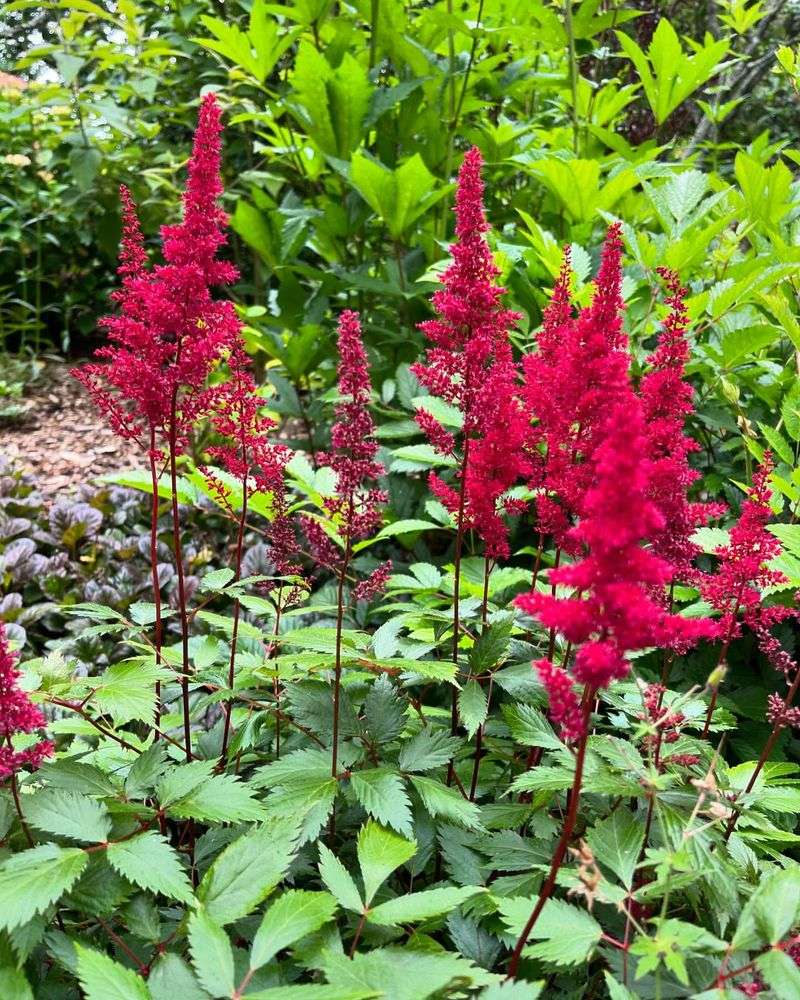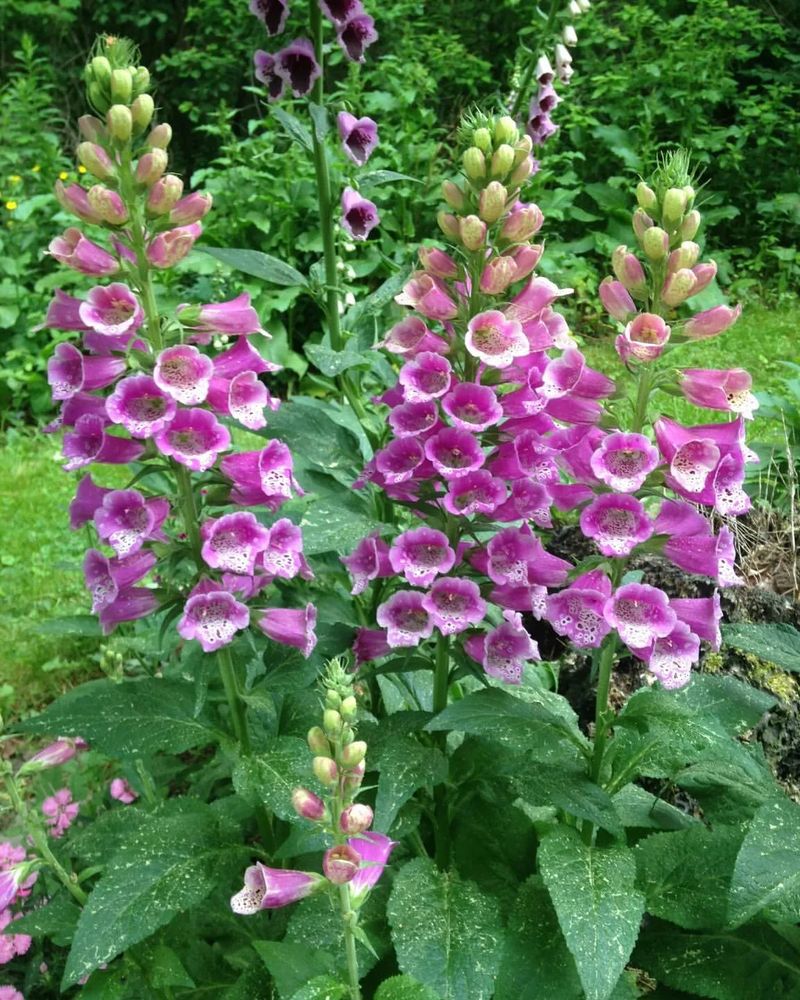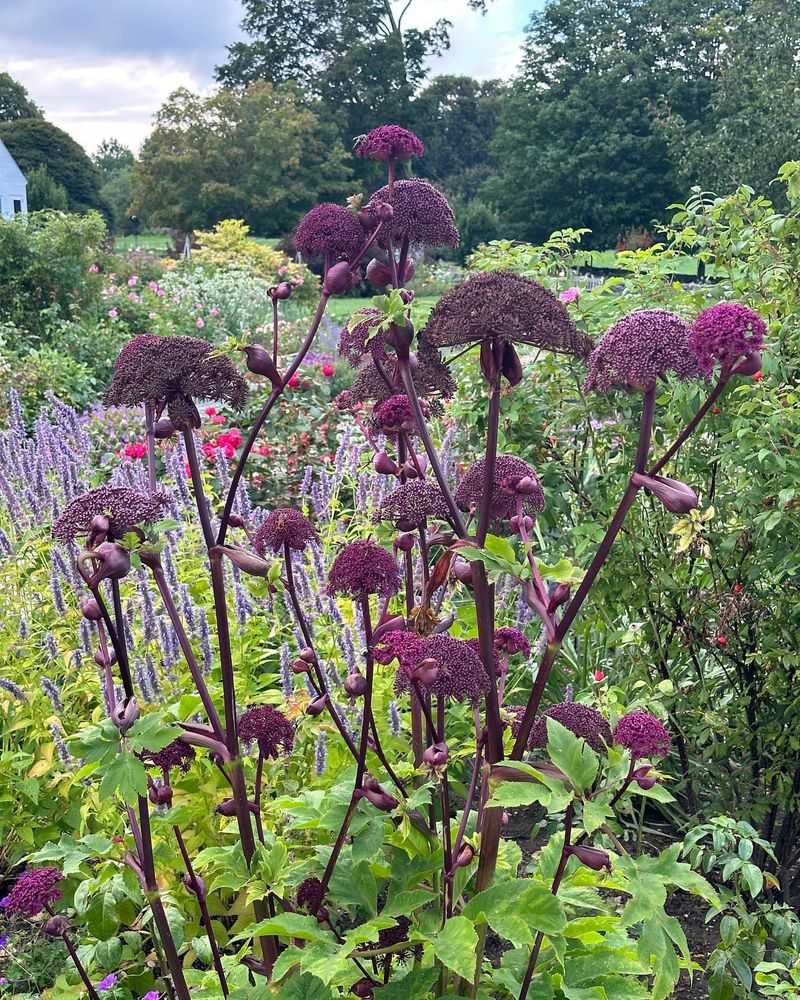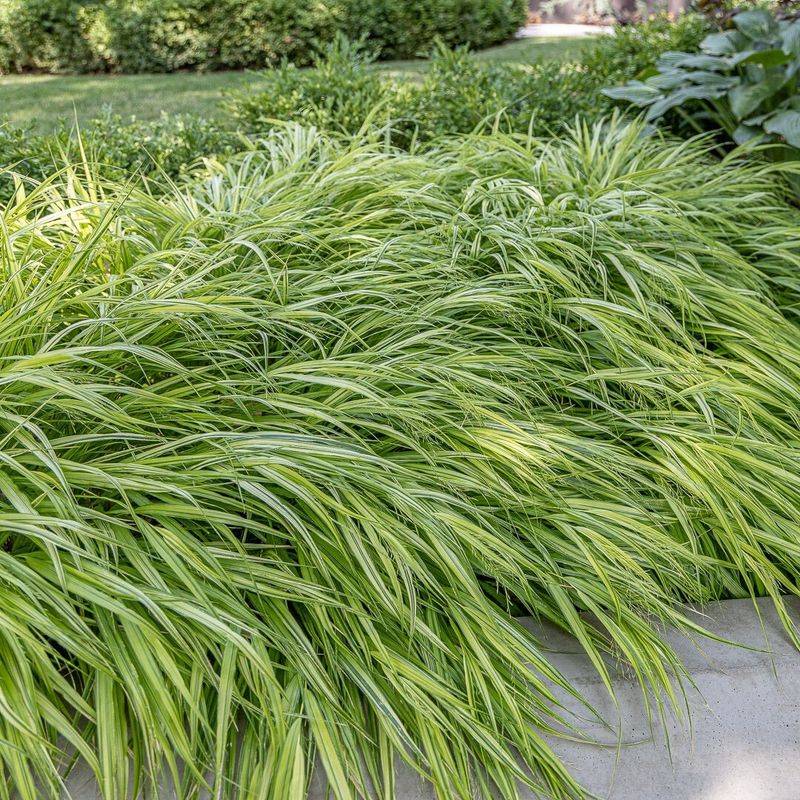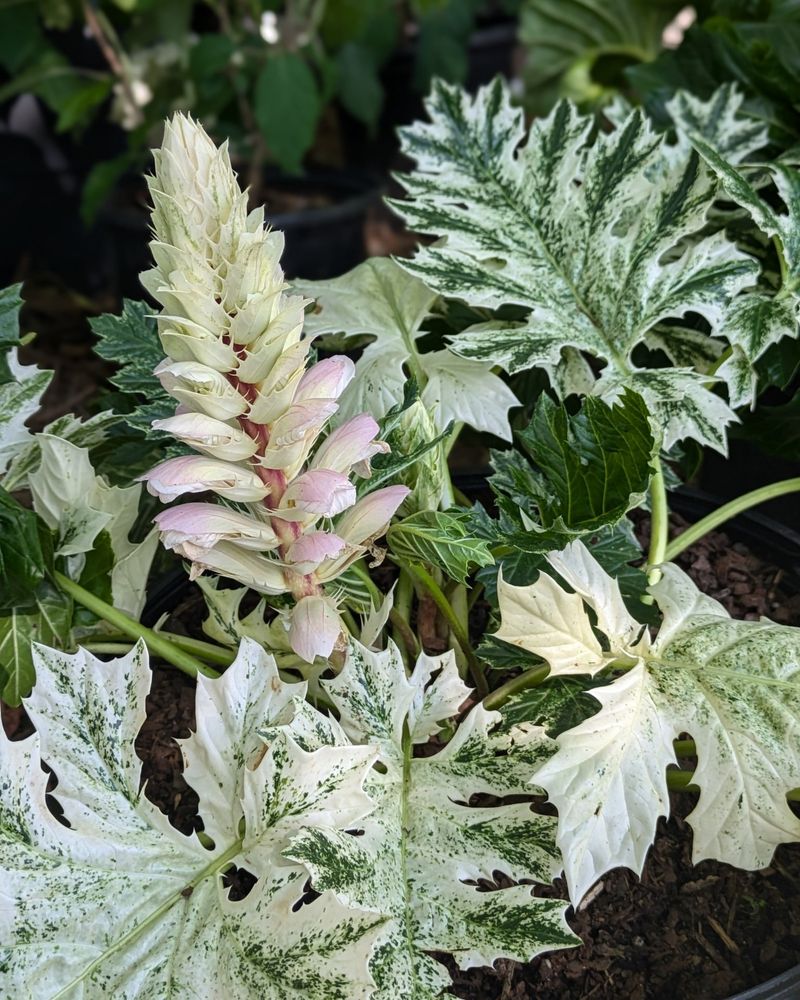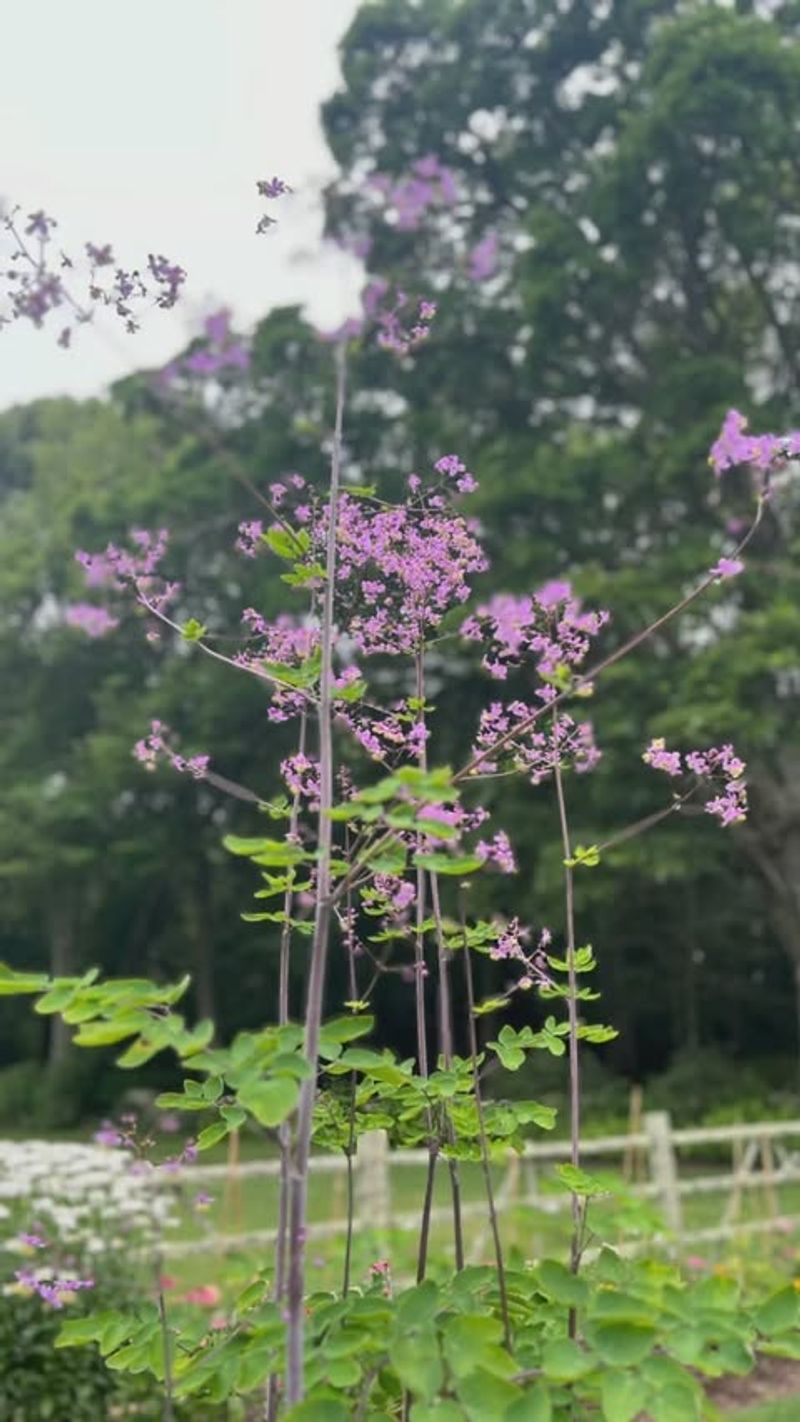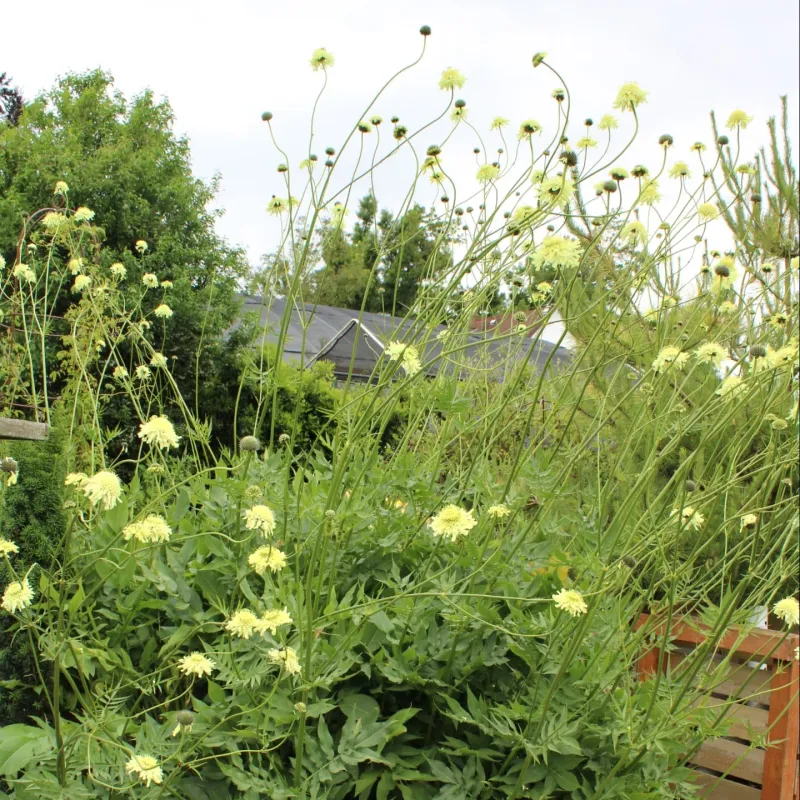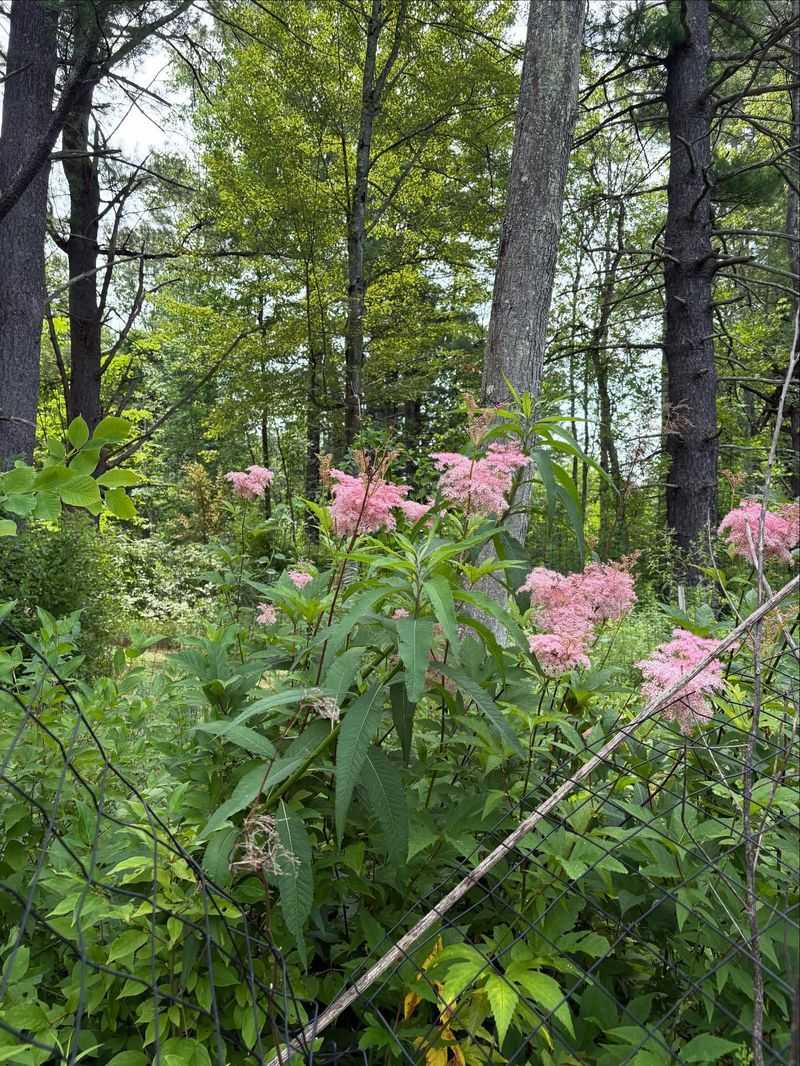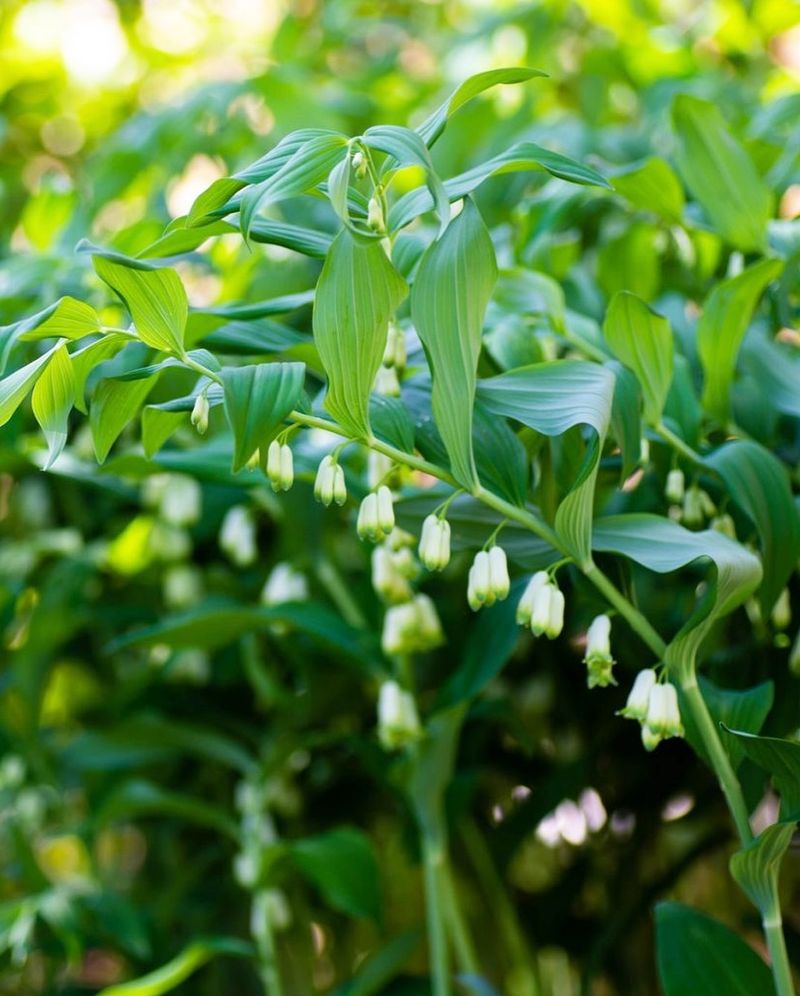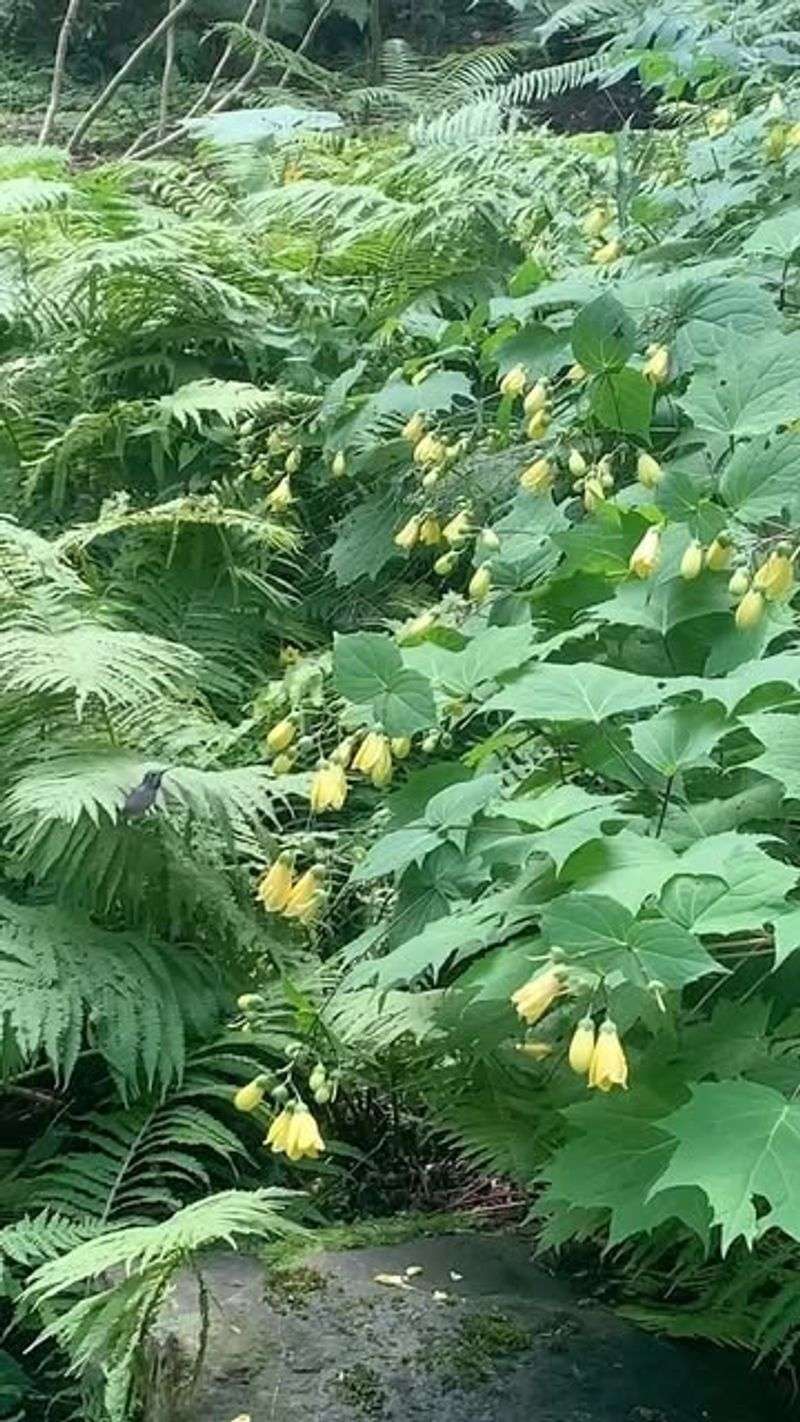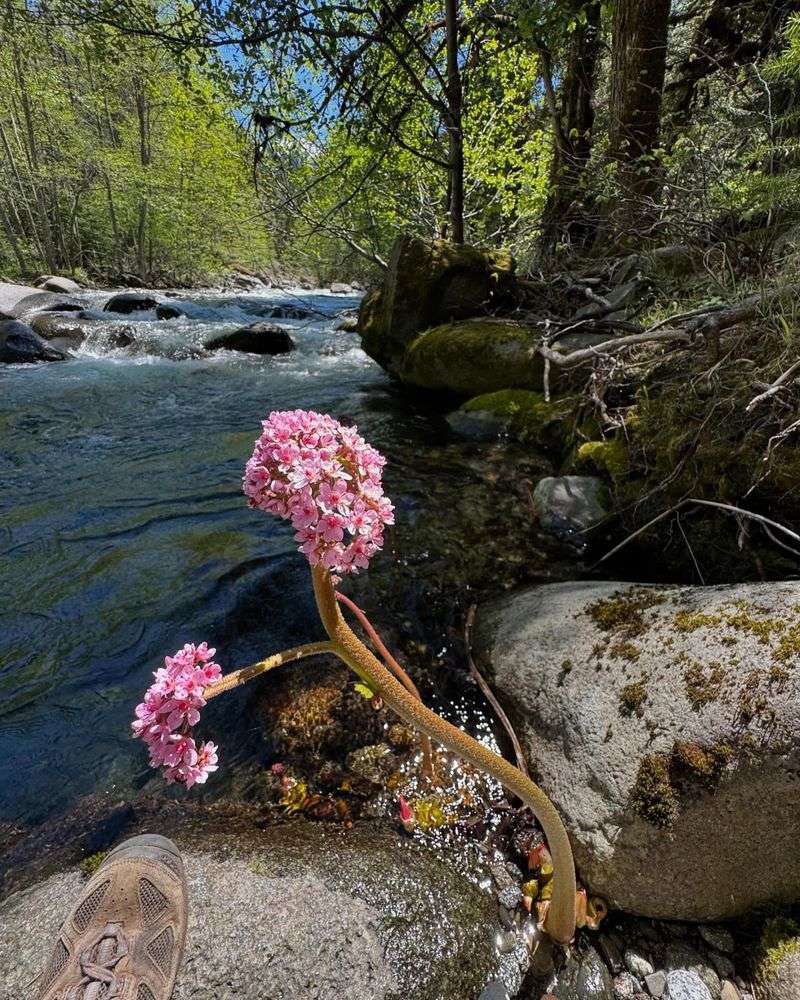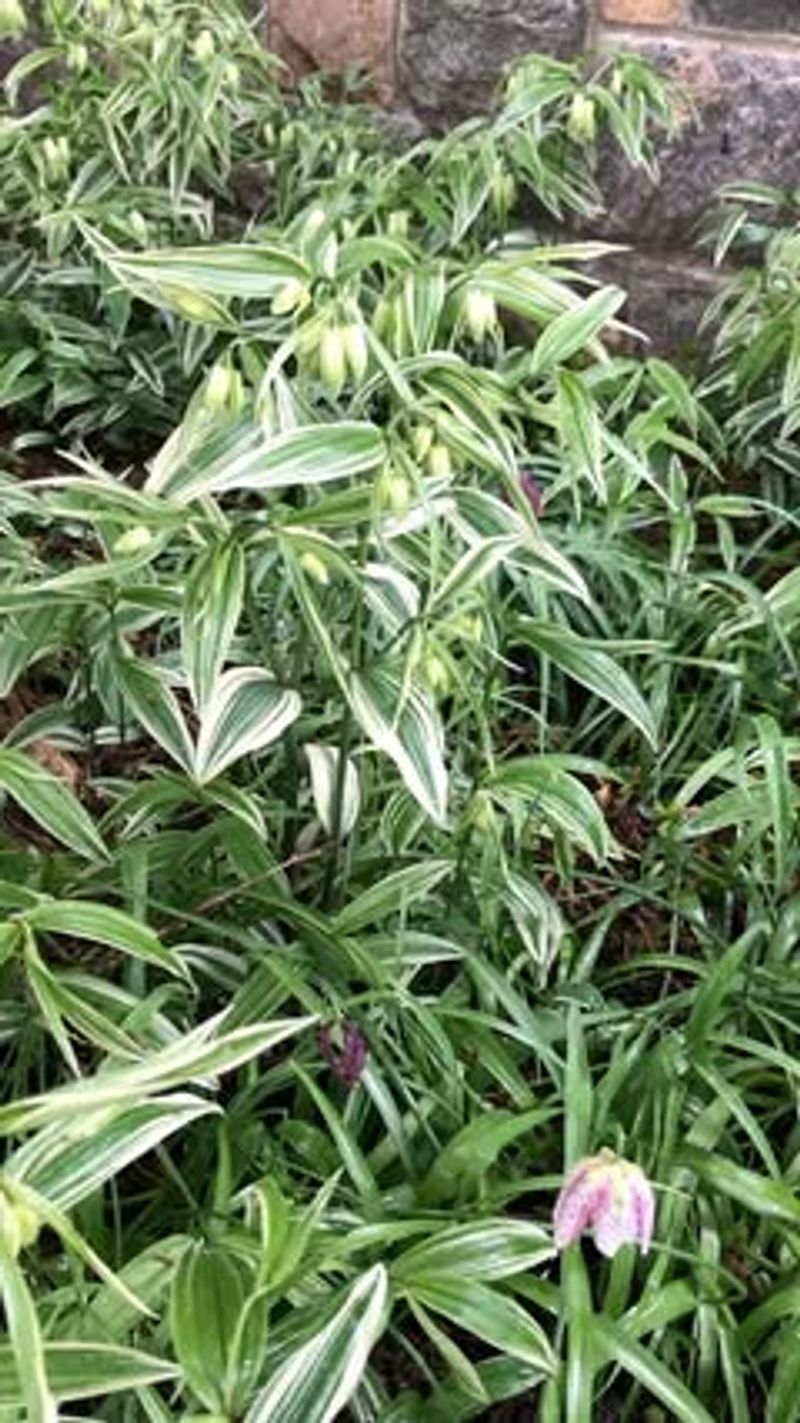Oregon’s wooded corners are perfect for tall, shade-loving perennials that add drama without demanding much sun.
I’ve planted a few favorites that tower gracefully and brighten even the gloomiest spots in my yard. These plants bring life and texture where others just can’t compete. Plus, they thrive effortlessly in Oregon’s cool, shady patches.
If your garden has those shadowy corners, these perennials are ready to shine!
1. Goatsbeard
Standing tall at 4-6 feet, this impressive native looks like a supersized astilbe with feathery white plumes. The fernlike foliage creates a lush backdrop in Oregon woodland gardens even when not flowering.
Many Oregon gardeners plant it alongside ferns for a natural forest feel. Goatsbeard thrives in the Pacific Northwest’s cool, moist conditions and doesn’t mind the state’s notorious winter rains.
2. Japanese Anemone
Late summer brings delicate, bobbing blooms atop 3-4 foot wiry stems when most shade plants have finished their show. The pink or white flowers dance in Oregon’s gentle late-summer breezes, adding movement to still corners.
These graceful perennials spread slowly through underground runners, creating natural colonies over time. In Oregon gardens, they appreciate protection from hot afternoon sun while still performing beautifully in dappled woodland settings.
3. Cimicifuga
Also called bugbane or black snakeroot, this dramatic woodland plant sends up 4-7 foot flower spikes that resemble bottlebrushes above deeply cut foliage. The fragrant white blooms appear in late summer, creating vertical interest in Oregon’s shadiest spots.
Purple-leaved varieties like ‘Brunette’ or ‘Hillside Black Beauty’ offer striking contrast against green companions. Many Oregon gardeners consider this native North American plant essential for adding architectural elements to woodland gardens.
4. Ligularia
Bold, toothed leaves up to 12 inches across form the base for 3-5 foot tall yellow flower spikes that brighten shady Oregon gardens. ‘The Rocket’ variety produces particularly striking vertical blooms that attract butterflies and stand out against dark foliage.
Ligularia loves Oregon’s naturally moist woodland conditions and makes a statement near water features. Despite its tropical appearance, this perennial handles Pacific Northwest winters with ease while maintaining its architectural presence year-round.
5. Rodgersia
Enormous compound leaves resembling horse chestnuts create a bold textural statement in Oregon’s woodland gardens. The bronzy-green foliage alone makes this 3-4 foot beauty worthwhile, but cream flower plumes in summer add extra appeal.
Rodgersia appreciates Oregon’s naturally acidic forest soils and consistent moisture. Native to Asian woodlands, it has found a perfect second home in the Pacific Northwest’s similar growing conditions, especially in coastal Oregon gardens.
6. Astilbe
Feathery plumes in shades from white to deep red rise 2-4 feet above ferny foliage, creating airy vertical accents. The tallest varieties like ‘Superba’ and ‘Ostrich Plume’ bring height to Oregon’s shadiest spots while maintaining a delicate appearance.
Astilbes perform beautifully in Oregon’s climate with its natural rainfall patterns. Even after blooms fade, the dried flower heads provide winter interest and texture when many other perennials have disappeared beneath the soil.
7. Foxglove
Speckled tubular blooms climb 3-5 foot stems, creating dramatic vertical interest in woodland settings. Though technically biennial, foxgloves self-seed so reliably in Oregon’s perfect conditions that they behave like true perennials, returning year after year.
The native Pacific Northwest foxglove (Digitalis purpurea) feels right at home in Oregon’s forests. These woodland beauties appreciate the state’s acidic soil and thrive in the dappled light beneath deciduous trees, creating cottage-garden charm in natural settings.
8. Angelica
Architectural and imposing, this dramatic biennial forms a 3-foot rosette of leaves before sending up 6-8 foot flowering stems topped with spectacular umbels. The hollow stems and distinctive seedheads provide interest from spring through winter in Oregon gardens.
Angelica gigas, with its deep burgundy flowers, performs particularly well in Oregon’s climate. Many Portland gardeners have discovered this plant’s ability to self-seed modestly, creating ongoing displays in woodland gardens without becoming invasive.
9. Japanese Forest Grass
Cascading fountains of gold-striped foliage reach 12-18 inches tall, brightening Oregon’s darkest garden corners. Though not as tall as some perennials, this ornamental grass creates essential contrast and movement among larger woodland plants.
Hakonechloa macra ‘Aureola’ maintains its brilliant coloration even in deep shade, unlike many variegated plants. Oregon gardeners appreciate how this grass thrives in the state’s naturally acidic forest soils while adding year-round structure to woodland gardens.
10. Bear’s Breeches
Glossy, deeply-cut leaves form impressive 3-foot mounds before sending up 4-5 foot flower spikes with unique hooded blooms. The architectural foliage makes a bold statement even when Acanthus isn’t flowering in Oregon’s woodland gardens.
These Mediterranean natives have adapted surprisingly well to Oregon’s climate, especially in protected locations. Their classical appearance brings a touch of formality to otherwise natural woodland settings throughout the Willamette Valley and coastal regions.
11. Thalictrum
Airy clouds of tiny lavender or white flowers float atop pencil-thin 4-6 foot stems, creating a dreamy effect in dappled shade. The delicate maidenhair fern-like foliage belies this perennial’s tough constitution in Oregon gardens.
Thalictrum rochebrunianum ‘Lavender Mist’ performs particularly well in the Pacific Northwest. Oregon gardeners value this plant for its ability to add height without bulk, allowing views through the garden while still creating vertical interest in woodland settings.
12. Cephalaria
Resembling a giant scabiosa, this 5-6 foot beauty produces pale yellow pincushion flowers that hover above neighboring plants. The see-through quality creates magical effects as light filters through Oregon’s tree canopies.
Cephalaria gigantea’s strong stems rarely need staking, even in Oregon’s occasional summer storms. Though not widely known, this perennial has developed a following among Willamette Valley gardeners seeking height and airiness for their woodland borders.
13. Filipendula
Cotton-candy plumes of pink flowers rise 4-6 feet above maple-like foliage, bringing cottage garden charm to woodland settings. The sweet fragrance attracts butterflies while the impressive height creates backdrop structure in Oregon shade gardens.
Filipendula rubra ‘Venusta’ thrives in Oregon’s naturally moist woodland conditions. Many Eugene gardeners have discovered this native plant’s ability to create stunning vertical accents while handling the region’s summer dry spells better than expected.
14. Polygonatum
Arching 3-4 foot stems carry dangling white bells along their length, creating elegant vertical lines in the woodland garden. The Solomon’s Seal’s architectural form and blue-black berries provide multi-season interest in Oregon’s shady corners.
Variegated forms brighten dark spaces with cream-edged leaves that seem to glow. Native to forests worldwide, these perennials have found perfect growing conditions in Oregon’s woodland gardens, particularly in the Coast Range’s sheltered valleys.
15. Kirengeshoma
Waxy yellow bells dangle from 3-4 foot purple-tinged stems above maple-shaped leaves in late summer. This rare Japanese woodland native brings a touch of the exotic to Oregon shade gardens when many other perennials have finished flowering.
Kirengeshoma palmata appreciates Oregon’s naturally acidic forest soils and consistent moisture. Portland’s Japanese Garden has showcased this unusual perennial, introducing many local gardeners to its unique beauty and perfect adaptation to Pacific Northwest conditions.
16. Darmera
Umbrella-like leaves up to 2 feet across create bold textural statements in Oregon’s moist woodland gardens. Pink flower clusters appear on 3-4 foot stems in early spring before the massive foliage unfurls, creating an unusual seasonal display.
Darmera peltata, also called Indian rhubarb, is native to stream banks in Oregon and Northern California. Many Ashland gardeners have discovered this indigenous plant’s dramatic presence along water features, where it thrives with minimal care in the state’s natural conditions.
17. Disporum
Fairy lantern flowers dangle from bamboo-like 3-4 foot stems, creating woodland elegance in Oregon’s shadiest spots. The arching form and clean foliage of this native perennial bring natural grace to forest-edge plantings.
Disporum hookeri, also called Fairy Bells, produces black berries that follow the spring flowers. Throughout Oregon’s Coast Range, this indigenous woodland plant creates stunning natural drifts, inspiring gardeners to incorporate its understated beauty into designed landscapes.

